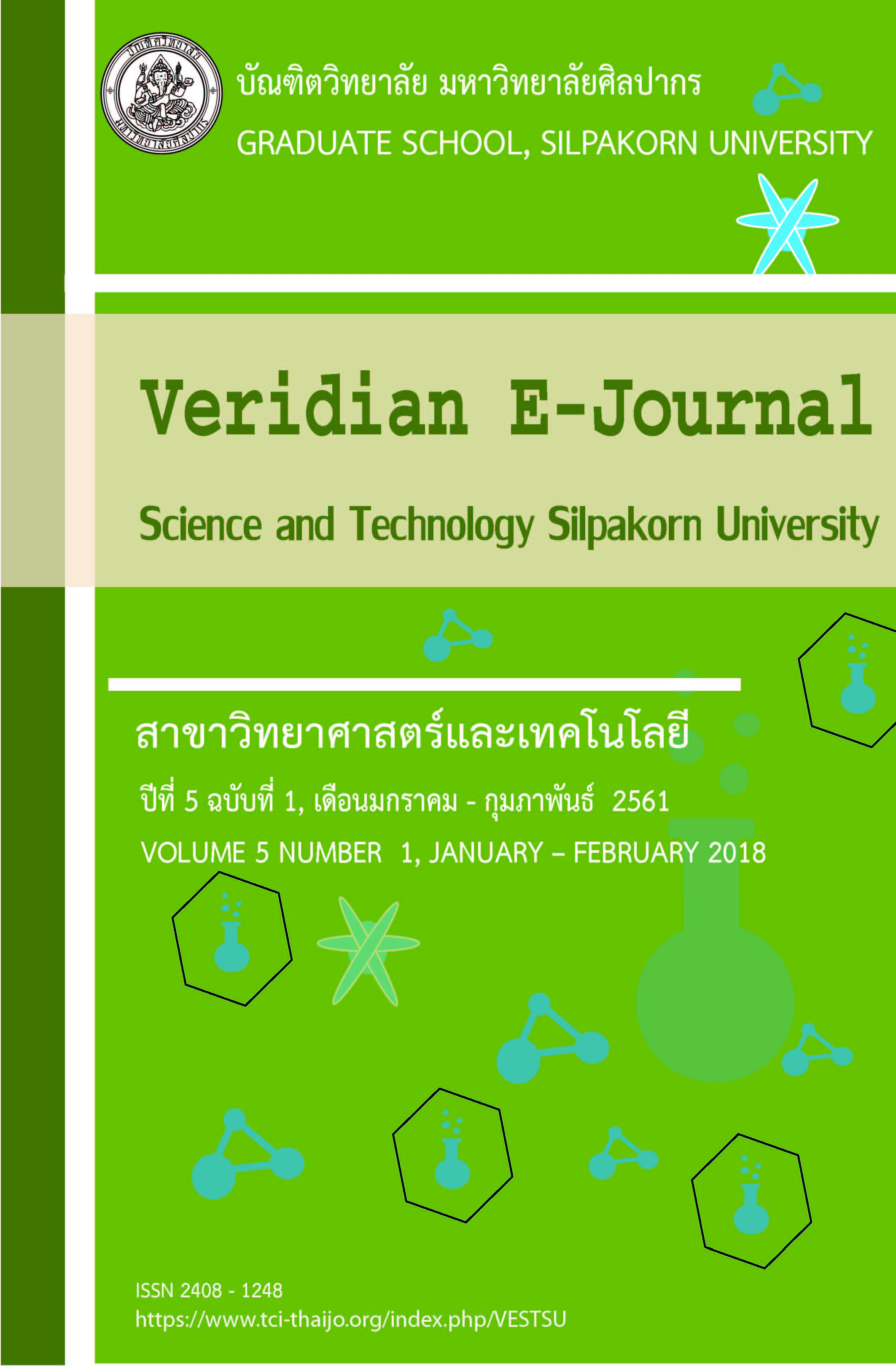ผลกระทบจากความไม่แน่นอนของการเปลี่ยนแปลงสภาพภูมิอากาศ ต่อปริมาณน้ำไหลลงเขื่อนศรีนครินทร์ (Impact of climate change uncertainty on inflow into Srinagarind Dam)
Main Article Content
Abstract
งานวิจัยนี้เป็นการประเมินผลกระทบจากความไม่แน่นอนของการเปลี่ยนแปลงสภาพภูมิอากาศต่อปริมาณน้ำไหลลงเขื่อนศรีนครินทร์ โดยใช้ปริมาณฝนในอนาคตจากแบบจำลองภูมิอากาศโลก (GCM) จำนวน 5 แบบจำลอง และสมมติฐานการปล่อยก๊าซเรือนกระจก (SRES) จำนวน 3 สมมติฐาน ซึ่งได้เพิ่มความละเอียดโดยวิธีการเปลี่ยนแปลงของรูปสามเหลี่ยม (delta change) ปริมาณน้ำไหลลงเขื่อนศรีนครินทร์ในอนาคตคำนวณโดยใช้แบบจำลอง NAM ผลการวิจัยพบว่าปริมาณฝนรายเดือนในลุ่มน้ำมีทั้งลดลงและเพิ่มขึ้นตั้งแต่ -70% ถึง +212% เมื่อเทียบกับช่วงปีฐาน แปรผันตามแบบจำลองภูมิอากาศโลกและสมมติฐานการปล่อยก๊าซเรือนกระจก โดยปริมาณฝนลดลงมากที่สุดในช่วงหน้าฝน จากแบบจำลองน้ำฝน-น้ำท่าพบว่า ปริมาณน้ำท่ารายเดือนเป็นไปในทิศทางเดียวกับปริมาณฝนซึ่งมีค่าอยู่ระหว่าง -43.14% ถึง +56.04% โดยปริมาณน้ำลดลงมากที่สุดในช่วงฤดูฝนถึงแม้ว่าร้อยละการลดลงมากที่สุดจะเกิดขึ้นในฤดูแล้งก็ตาม ส่วนปริมาณน้ำรายปีมีลดลงทุกแบบจำลอง ตั้งแต่ -0.93% ถึง -17.29% แสดงให้เห็นว่าปริมาณน้ำในอนาคตมีความไม่แน่นอนสูงมากเนื่องจากการเปลี่ยนแปลงสภาพภูมิอากาศ ซึ่งความไม่แน่นอนนี้ควรนำมาใช้ในการพิจารณาปรับการบริหารและจัดการ อ่างเก็บน้ำต่อไป
This research aims to assess the impact of climate change uncertainty on the inflows of Srinagarind Dam using future rainfall data projected by 5 General Circulation Models (GCM) and 3 Emission Scenarios (SRES). Delta change method is used for downscaling climate data and NAM Model is used to simulate future inflows of the dam. This study found that future monthly rainfall in the catchment will change in a range of -70% to +212% as compared to baseline period, depending on the GCM and Emission Scenarios. Maximum decrease in future monthly rainfall was found in the rainy season. The change in future monthly inflows simulated by rainfall-runoff has similar trend as of the change in future monthly rainfall, which is in a range of -43.14% to +56.04%. Maximum decrease in future inflows was found in the rainy season for its total volume and in the dry season for its percentage. Future annual inflows resulted by all GCM and Emission Scenarios will however decrease in a range of -0.93% to -17.29%. These results suggested that future inflows of the dam are highly uncertain due to the impact of climate change. This uncertainty should be taken into account for future adaptation on the management and operation of the dam in the future.
